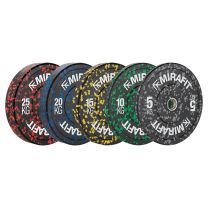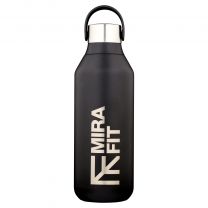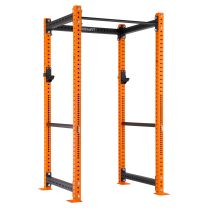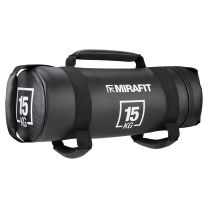How to Beat the Heat
How to Beat the Heat

It’s not easy to train when it’s sweltering outside. But you don’t have to hit pause when summer comes around.
Your body is remarkable in the way it deals with heat. Training in hot weather delivers a double onslaught to your system as external and metabolic warmth work together to lift your core temperature. Your body hits back with sweat which harnesses the power of evaporation and your heart beats faster to take blood to the skin to encourage greater heat loss.
But what can you do to stay safe and stay moving when it’s warm? We spoke to personal trainer Dave Smith for some insider tips on how to smash summer and keep on track right into autumn.
Tune in
‘Pick your battles,’ says Dave. ‘You don’t have to go at it 100% every day – it’s ok to have an active recovery day if that’s what you need.’
It’s normal to put extra pressure on yourself when you’re training in the heat so some discomfort is inevitable. It’s no surprise that the fitter you are, the better you’ll cope but signs that your body’s cooling systems are becoming overwhelmed, particularly in very hot or humid weather, shouldn’t be ignored. If you’re unwell find somewhere cool to rest, drink fluids, and seek medical help if you need to.
Heat exhaustion is dangerous and although it’s not common among endurance athletes, stay vigilant for the signs and you’ll keep yourself safe. Dave says, ‘listen to your body but if you’re following a session, which we’re running online at the moment, then listen to your trainer too’.
Things to look out for
• Confusion
• Nausea
• Heat rash
• Muscle cramps
• Headache
• Pale and clammy skin
• Warm and dry skin
• Dizzyness
• Extreme thirst
How to prepare

Get yourself sorted before training in the heat and you’ll have an easier time of it. ‘You always need to prepare to make sure you avoid injury,’ says Dave. ‘But it’s even more important when you’re working out in the heat.’
• Dress right – wicking, non-clingy fabrics will take the moisture away, helping you to sweat better. Choose performance gear over something like a simple cotton t-shirt.
• Hydrate – start with an optimum blood volume level to ensure muscle performance and adequate sweat output.
• Stock up on calories – make sure you’ve got enough fuel onboard.
• Train in the spring – get your cardiovascular system up to speed while it’s still cool enough to work out in comfort. Fitter bodies cope better with the heat.
• Precool – some athletes will take a cool bath or turn down the air-con before starting.
Inside/outside
If you want to avoid the heat altogether, an air-conditioned gym is the place to train. Of course, at times of social distancing, many people are working out at home which brings its own challenges. With perhaps a small space to move in and limited equipment, you’ll need to adapt in more ways than one. ‘It’s all about being sensible,’ Dave advises. ‘Open windows to let the air through or even your front door a crack. You can also head outside onto the patio but make sure it’s safe and level and you’re not likely to hurt yourself.’
If you’re moving outdoors use your imagination. Catch a cool breeze by going for a run by water or stick to the shade in woodland. The pool is also a great place to improve strength and flexibility if you have access to one, especially if you harness the power of water resistance.
The wise time
Enjoy the lower temperatures of early morning and late evening. Not always an option if you have other responsibilities but it’s surprising how easily a daily schedule can be modified to get in a daybreak run or workout.
Think about what training you need and when it’s best to do it. If you have a triathlon on the horizon, choose to do your pool training when it’s hot, leaving the other disciplines for when the temperature drops a little.
Adapt and thrive
There will be times when training in the heat is unavoidable or part of your acclimatisation schedule for an event, so prepare yourself, kit up and get ready to go.
• Build it up – it can take a while for the body to get used to working out in the heat, so start with slow and short sessions.
• After a while, your body will get better at sweating and will adjust its electrolyte levels to keep the core temp down.
• If you’re running or cycling, go for time, not distance.
• Eat hydrating fruit and vegetables beforehand – pick things like melon, strawberries, cucumber and carrots.
• Then keep hydrated – obviously heat, exercise and thirst go together but sweating and performance rely on fluid so give your body what it needs.
• Be prepared to compromise on the quality of your training – you may not be able to do what you’re normally capable of and that’s ok.
• Think about your route – an out and back route might not be the best when you’re not used to the heat.
A few final words from our expert

• Don’t feel like you need to compete – either with yourself or others. Do what’s best for you.
• Drink plenty post-workout to keep hydrated and check-in with yourself the next day. What can you learn?
• Scale back your RPE if you need to. It might be a 7/10 day.
• Go at a pace you can sustain.
• Think about whether you need resistance today. If it’s really hot, just go for a bodyweight workout – you’re still getting the benefit.
Whether you choose to adapt your schedule or meet the heat head-on, you’ve every reason to improve your fitness and strength over the summer. Prepare well, get the right equipment and stay vigilant to make sure you stay safe and make the most of it.
‘Just be sensible,’ says Dave. ‘Be humble and cruise through if it’s really hot, and keep listening to your body.’
For more content, follow us on Instagram, YouTube, TikTok, and on our official Mirafit Facebook page.
Enter your email to signup to our newsletter
Tags: Misc > Lifestyle








